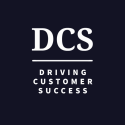Proactive communication helps clients succeed. Here’s how to get it right.
Establishing regular communication and building relationships with clients is just as important as a strong product.

Let’s face it – customer issues are inevitable.
No matter how much planning, prevention, thought and skill go into creating a foolproof process, technical (or client) error is a part of any business. In fact, it’s one of the main reasons customer success teams exist in the first place, and why 72% of businesses say that customer success is their top priority, according to data from Forrester research. And while reactive problem-solving can take up a large chunk of a CSM’s day, it doesn’t have to.
That’s why in order to have the strongest customer assistance capabilities possible, communication is crucial. A proactive approach allows customer success managers to better anticipate any potential threats through data analysis and clearly communicate roadblocks to customers ahead of time for a seamless – and friendlier – solution.
Below, Built In Austin caught up with two customer success leaders to discuss the communication habits they have adopted and the data that supports the strategies each of their teams uses for the most effective proactive approach.
The resounding answer? “Early and often.”
Manny Matos – CLIENT SUCCESS MANAGER

What’s one habit you’ve adopted that’s helped you be more proactive in your communications with clients?
“Early and often!” When it comes to proactive communication, you need systems in place to help you prioritize your daily workflow. Currently, I set reminders to proactively reach out to my clients every 13 weeks (about once per quarter). I also prioritize my mornings to be the time I get most of my proactive work done. I block out sections of my calendar to ensure I’m able to focus on proactive work before the reactive tasks start coming in.
What role does data play in helping you and your team provide more proactive communications to customers?
Data plays a huge role on our team. Over the years at Subsplash, I have seen the CSM team really mature and grow in this area. Currently, we work closely with our business analytics team and collaborate on different types of dashboards that help us identify which clients we should prioritize in our portfolio. As a CSM, our role is a constant push and pull between proactive and reactive work. Tools that help us focus and prioritize our efforts not only help us be more intentional and effective but also makes our jobs way more enjoyable!
When it comes to proactive communication, you need systems in place to help you prioritize your daily workflow.”
As a team, what’s a system or strategy you’ve put in place to get ahead of potential issues before they arise?
Part of being a great CSM at Subsplash is developing and retaining an intentional relationship with our accounts. We focus on helping our clients succeed and hit their organizational goals while also aiming to become more loyal and stickier partners. One of the main strategies we focus on is our Quarterly Business Reviews. This is a time when we intentionally meet with our clients either on Zoom or in person to review their last quarter numbers and plan for the upcoming quarter. During these meetings, we tend to focus on strategy and goal setting. But we always leave time at the end to share questions and hear of any issues or roadblocks they may be hitting. As experts in the digital engagement space, we get the opportunity to coach and instruct our clients on how to solve the many problems they are facing.
Matt Gold – DIRECTOR, CUSTOMER SUCCESS

What’s one habit you’ve adopted that’s helped you be more proactive in your communications with clients?
The best piece of advice I’ve received related to account management and customer support is to always “set the table” for your customers. At the end of the day, customers are humans just like you and I. They want to be treated fairly, expect honesty, proactive communication and quick reactions when issues arise (because they will). If you know your customer well, you know what triggers to be on the lookout for. In the on-highway transportation industry, truck uptime is the No. 1 priority. Setting the table is all about setting, managing and resetting expectations as needed throughout the customer journey.
In practice, this might mean calling your main point of contact prior to a large update meeting to deliver unexpected news beforehand so he or she has time to process the information and provide guidance. It could also simply mean regularly providing business and product updates. These examples build trusted partnerships instead of a transactional relationships and can be the decision-making factor in relationship-oriented industries.
What role does data play in helping you and your team provide more proactive communications to customers?
Data plays a key role when presenting material and communicating product value to customers, especially with technical products or technical audiences. When communicating with customers, any time you can remove subjectivity with data-driven decisions or recommendations, the more productive the conversation will be. At Hyliion, we are fortunate that our hybrid electric technology for semi-trucks sends hundreds of messages to the cloud every minute a truck operates. This allows our recently created customer success team to analyze the information and proactively communicate to our customers.
Examples include fuel economy or uptime metrics. Without this data and the analysis tools our software team has developed, we would be reliant on customer data interpretation and sentiment to gauge product success which is not a successful model. In a customer-facing role, you need to strike the right balance between being an effective listener but also dictating the message.
Any time you can remove subjectivity with data-driven decisions or recommendations, the more productive the conversation will be.”
As a team, what’s a system or strategy you’ve put in place to get ahead of potential issues before they arise?
The most effective tool our team has access to is a simulation tool that allows us to predict and communicate to customers the fuel economy improvement they should expect from using our product. In addition, we have a related data analysis tool that evaluates real-time metrics of our products in the field in the event service or maintenance is required. The simulation tool allows us to appropriately set expectations up front with customers and the data analysis tool allows us to notify customers if an issue arises before they find out independently. Even though it is not always easy to proactively deliver difficult news to customers, “early and often” communication is almost always the best approach.
Original post by Tyler Holmes here : https://www.builtinaustin.com/2021/07/28/proactive-communication-helping-clients-succeed

Hakan Ozturk
Founder, theCScafe.com, #1 Weekly Customer Success Newsletter
Hakan Ozturk is a Paris-based Customer Success leader with over 15 years of experience in the computer software industry. Passionate about driving growth and delivering value to strategic customers, Hakan has established himself as a trusted industry expert. As the Founder of The Customer Success Café Newsletter and TopCSjobs.com, Hakan provides valuable industry insights and daily-updated job opportunities worldwide in the field of Customer Success. Connect with Hakan to boost your career in CS and your company’s potential for massive growth.

Leave a Reply